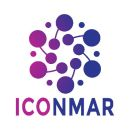Speaker
Description
Diabetes is a major global health issue, with approximately 537 million adults affected in
2021—a figure projected to reach 783 million by 2045. Early diagnosis and continuous
monitoring are essential for effective management. However, current tools such as glucometers
and sensor patches are either invasive or minimally invasive, causing discomfort, especially in
children and the elderly. Recent advances in non-invasive monitoring using near-infrared (NIR)
light show promise, but challenges remain, including interference from ambient light, water
absorption, and reducing substances. Studies suggest that integrating ultrasound with NIR can
improve measurement contrast and sensitivity. This study aims to enhance the correlation
between glucose concentration and NIR absorption by incorporating 1 MHz ultrasound. A NIR
transmitter and silicon photodiode circuit were developed, and measurements were conducted
on glucose solutions (0–300 mg/dL) with and without 30 mg/dL ascorbic acid to evaluate
selectivity. Results showed that ultrasound improved sensitivity from 72.24 µV/mg·dL⁻¹ to 77.56
µV/mg·dL⁻¹ in glucose-only samples and from 105.6 µV/mg·dL⁻¹ to 126.3 µV/mg·dL⁻¹ in glucose
+ acid samples, corresponding to 7.4% and 19.6% improvements, respectively. Linearity (R²)
also improved, especially in glucose + acid samples (from 0.7859 to 0.9634), indicating higher
measurement reliability. Selectivity remained consistently high across all concentrations (>98%),
with minor variations, confirming the system's ability to distinguish glucose from interfering
substances. In conclusion, the NIR prototype integrated with ultrasound demonstrated improved
sensitivity, stronger linear correlation, and high selectivity, supporting its potential as a
non-invasive glucose monitoring solution.

